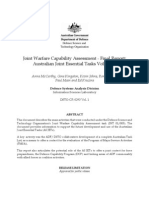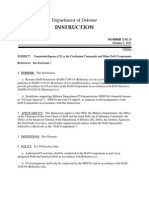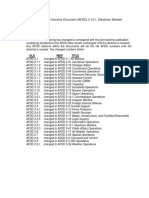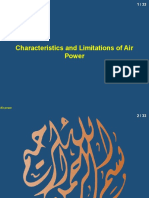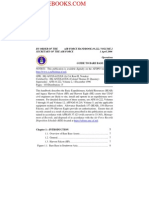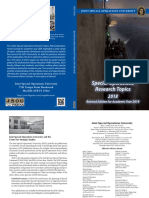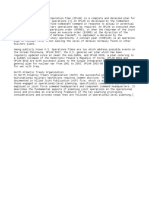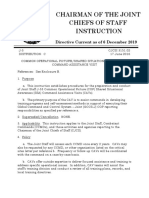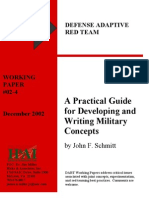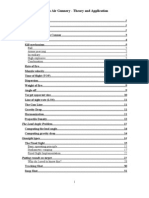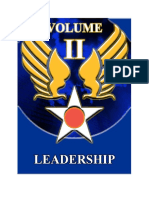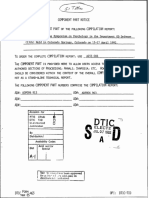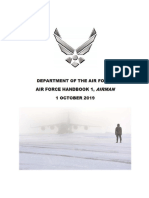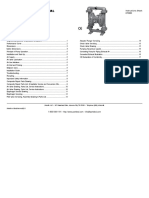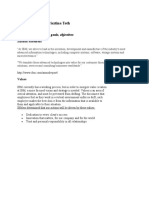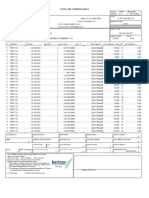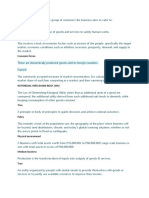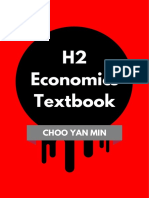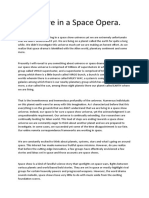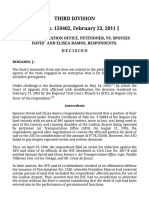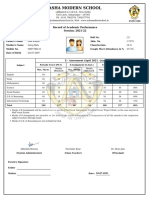Doctrine Update for AFDD 1-1, Leadership and Force Development
27 October 2011
AFDD 1-1, Leadership and Force Development captures the Air Forces best practices for creating leaders and applying leadership. Highlights include: Your personal leadership is the key to our Services success in fulfilling our mission to fly, fight, and win ~ General Norton A. Schwartz An enhanced discussion on the term Airman: All Airmen, military and civilian, support and defend the Constitution of the United States and live by the Air Force core values. The term Airman has been historically associated with uniformed members of the US Air Force regardless of rank, component, or specialty. Today, Department of the Air Force civilians are incorporated into the broader meaning of the term when there is a need to communicate to a larger audience within the Service, either for force development purposes or for clarity and inclusiveness by senior leaders when addressing a larger body of personnel (p. 1) Core Values discussion. The professional Air Force ethic consists of three fundamental and enduring values of integrity first, service before self, and excellence in all we do. Success hinges on the incorporation of these values into the character of every Airman (p. 9) Warfighting and the profession of arms. Airmen, firmly grounded in the core values and ingrained with a focus on the profession of arms, react to the stresses of combat, the pressures of deployed operations, and the demands of daily activities at home station with valor, courage, and sacrifice (p. 15) Adds joint warfare to the definition of leadership. Leadership is the art and science of motivating, influencing, and directing Airmen to understand and accomplish the Air Force mission in joint warfare (p. 21) Provides a historical analysis of leadership within the Air Force, dating back to the Services origin in 1947 (p. 22) The leadership level at which an Airman operates determines the institutional competencies required to lead Airmen to mission accomplishment. (p. 26)
leaders are created through a process of development involving education, training, and experience coupled with ongoing mentoring by more experienced leaders. ~ General Norton A. Schwartz
�Institutional Competencies
Air Force leadership has two main components: institutional competencies and leadership actions (p. 33) o Intuitional competencies are a measureable cluster of skills, knowledge, and abilities required of all Airmen. (pp. 36 and 52) o Leadership actions. Air Force leaders influence people, improve their abilities, and direct their activities to accomplish their military mission (p. 34) Force development is a deliberate process of preparing Airmen through the continuum of learning with the required competencies to meet the challenges of the 21st Century (p. 36) o Force Development is a function of both individual and Air Force institutional responsibility (p. 37) o The continuum of learning focuses on developing Airmen who thoroughly understand the mission, the organization, and Air Force Doctrine (p. 38)
To learn more, click on AFDD1-1, Leadership and Force Development. For more information, visit the LeMay Center for Doctrine Development and Education, call us at DSN 493-9575, or e-mail LeMayCtr.weworkflow@maxwell.af.mil
Doolittle Raiders THE AIRMANS CREED I AM AN AMERICAN AIRMAN. I AM A WARRIOR. I HAVE ANSWERED MY NATIONS CALL. I AM AN AMERICAN AIRMAN. MY MISSION IS TO FLY, FIGHT, AND WIN. I AM FAITHFUL TO A PROUD HERITAGE, A TRADITION OF HONOR, AND A LEGACY OF VALOR. I AM AN AMERICAN AIRMAN, GUARDIAN OF FREEDOM AND JUSTICE, MY NATIONS SWORD AND SHIELD, ITS SENTRY AND AVENGER. I DEFEND MY COUNTRY WITH MY LIFE. I AM AN AMERICAN AIRMAN: WINGMAN, LEADER, WARRIOR. I WILL NEVER LEAVE AN AIRMAN BEHIND, I WILL NEVER FALTER, AND I WILL NOT FAIL. Tuskegee Airmen
Training Iraqis for explosive ordnance disposal
Deploying to Southwest Asia
(p. 20, AFDD 1-1)


